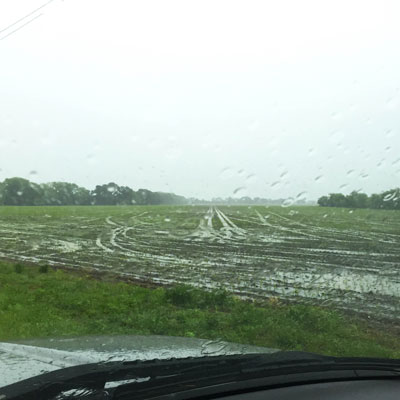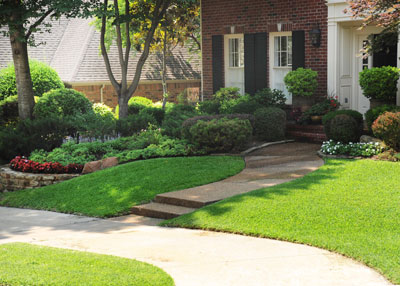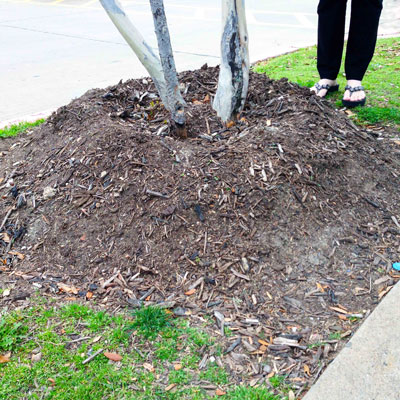Facts to Know About Wet Spells
A thousand facts ran through my head as the rains kept coming and coming this week. They’re things that gardeners need to know in order to help their plants survive. Take a look, and test your knowledge.
• It is normal for water to be standing on your lawn and in your garden 3 or 4 hours after a heavy rain. It is not normal for water still to be standing there several days later.

Not much agricultural will happen in this soil until things dry out. Photo is from a couple of days ago, not far from our Collin County home. Strangely, this large field sits atop a significant hill.
• Never apply water to soils that are already wet, no matter how badly wilted your plants have become. Saturated soils have little or no oxygen. Roots die in that environment, most notably roots of tomatoes. The plants will be wilted (especially once the sun comes out), and odd little roots (“adventitious” roots) will try to develop along the stems, but to no avail.
• Raised beds ensure better drainage. Even if you plant on 3- or 4-inch rises, your plants’ roots won’t be standing in fully saturated ground. Incident water will drain away to the sides.

This raised-bed garden provides ideal soil drainage. It takes advantage of the natural slope.
• Container gardening raises your plant high above all the problems with waterlogged soils (assuming the pots all have drain holes, of course).
• Unless you’re in a marshy part of the state, set new plants out at their original grades – the level of soil in their containers. If you’re ever seen a new shade tree with soil piled up around its trunk, that’s a tree that will struggle. That wasn’t done to avoid waterlogged soil. It was a means of getting rid of the soil that was taken out of the hole without having to carry it off-site.

On, No!!! Mounding up soil and mulch into a volcano around a young tree’s trunk is a good way to ensure its failure. You cover the root flare and you make watering quite difficult.
• If you’re gardening in soils that are very often completely saturated, consider where the water is coming from. Is it rainfall? If so, consider a way to get it off-property and into the storm sewers. If not, determine where it is coming from and how best you can interrupt its flow.
• Cut swales and build berms to guide the runoff. It isn’t difficult, but you’ll need either an inexpensive string line level or a long straight edge and carpenter’s level.
• Install ground-level grates to drain the low spots into 4-inch PVC pipe. Carry it to a lower spot that will let it drain away. All you need is 1/4- to 1/2-inch of fall for every 10 feet.
• Plant each new tree at the same grade as it was growing before. Build a donut-shaped berm with the soil you remove to make watering easier during dry times. Open the berm up with a hoe if water is standing there after rains.
• Don’t count on plants to drain your soils for you. Sure, willow, cottonwoods and bald cypress grow at riverside, so they’re clearly tolerant of high water tables. But plants in those settings have moisture year ‘round. If you plant those trees in your yard, they will struggle with droughts. There are better ways to get rid of the water.
